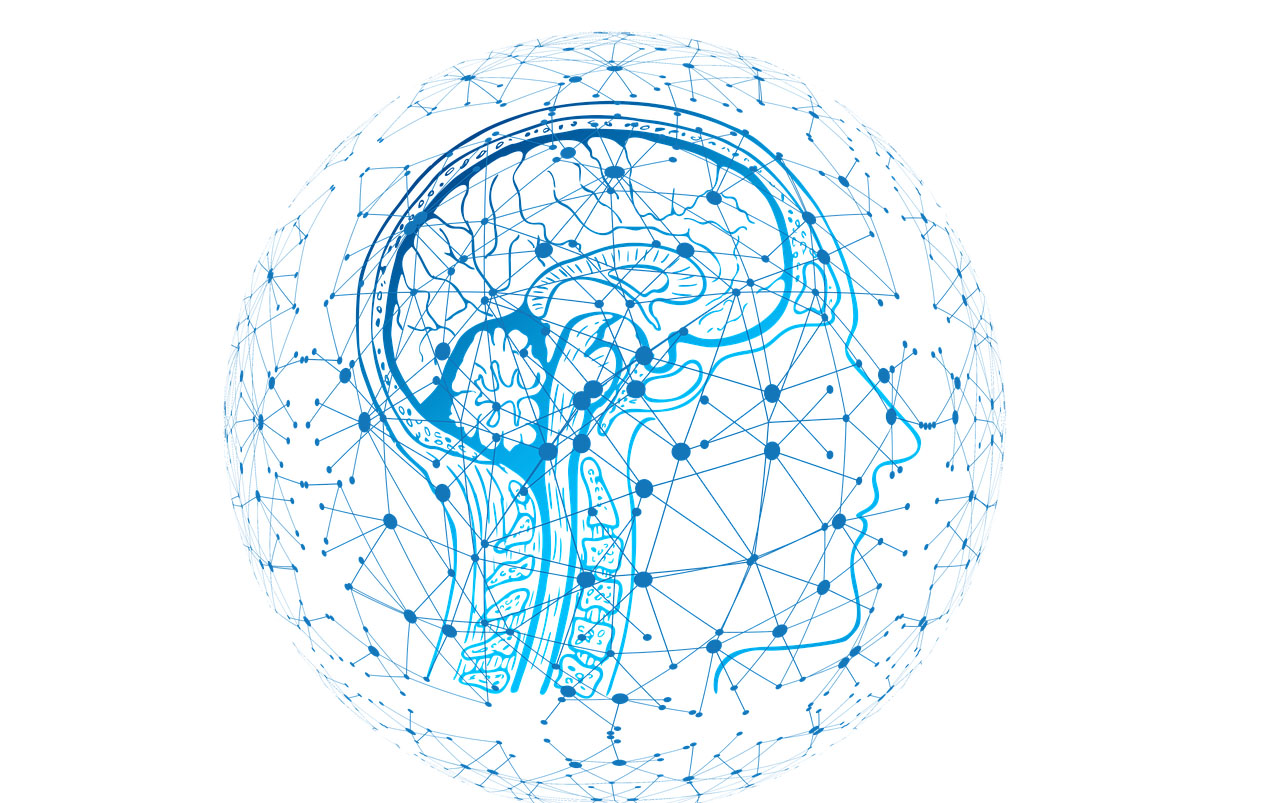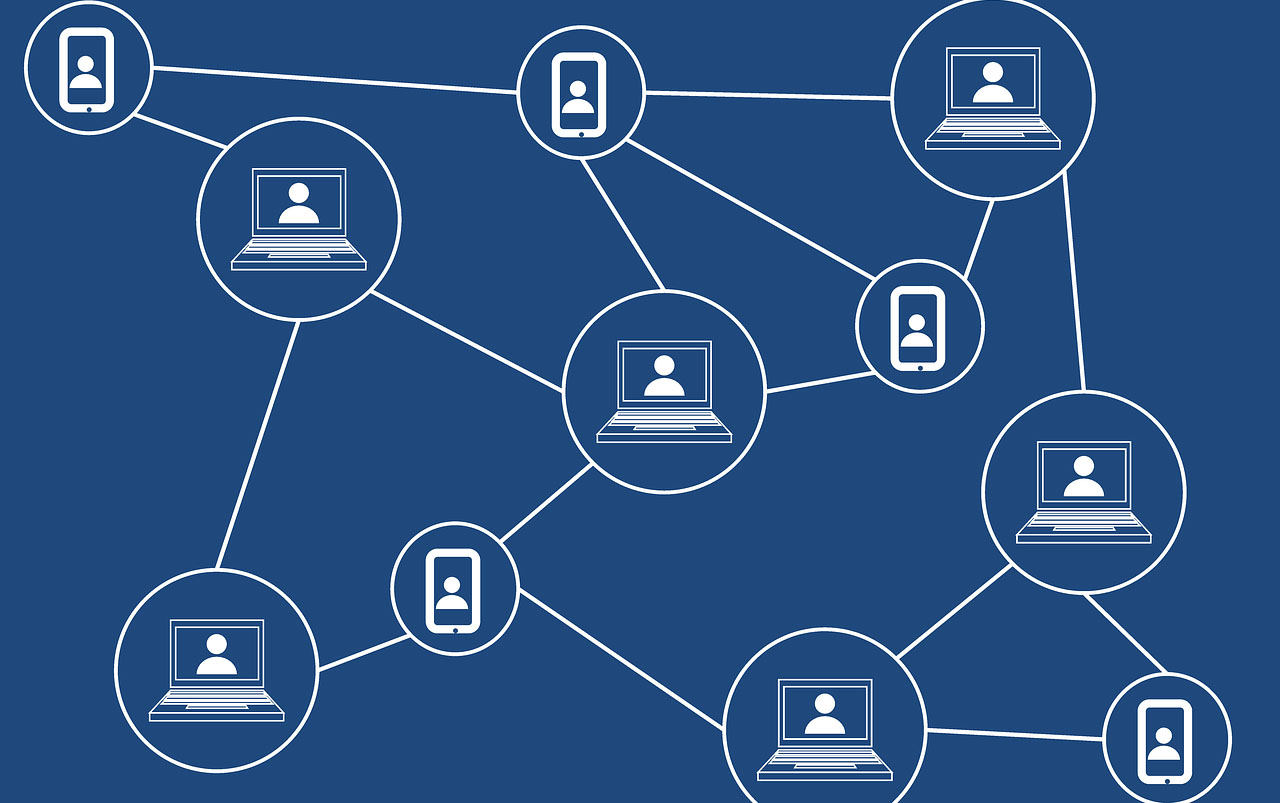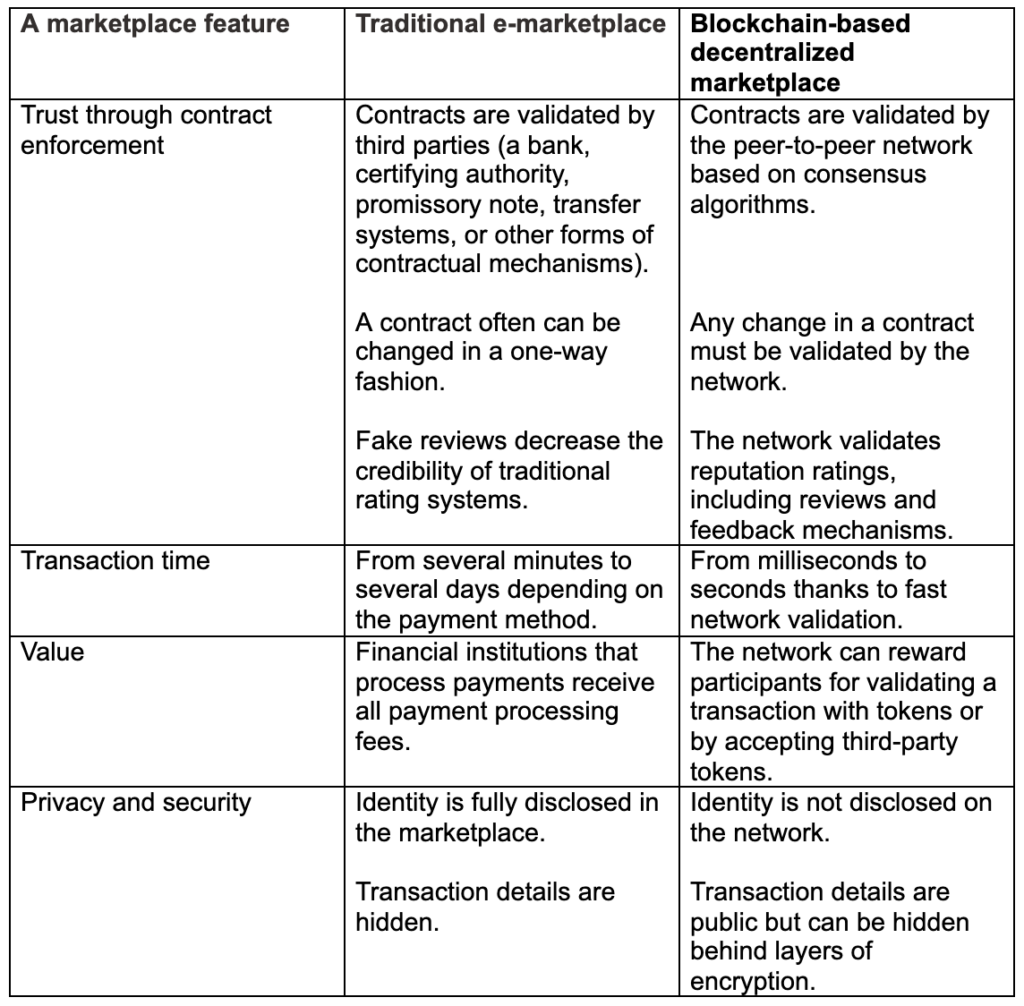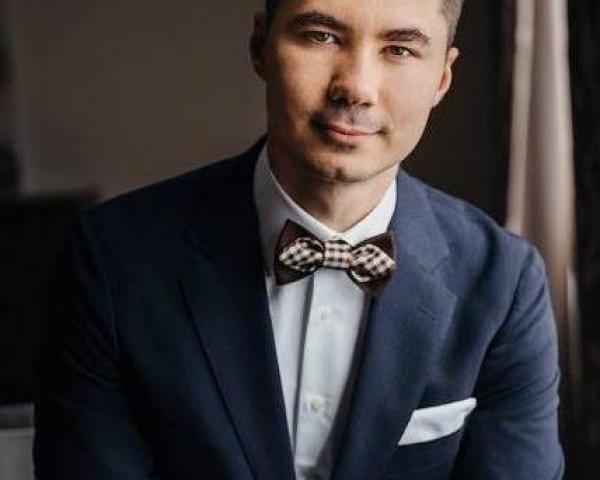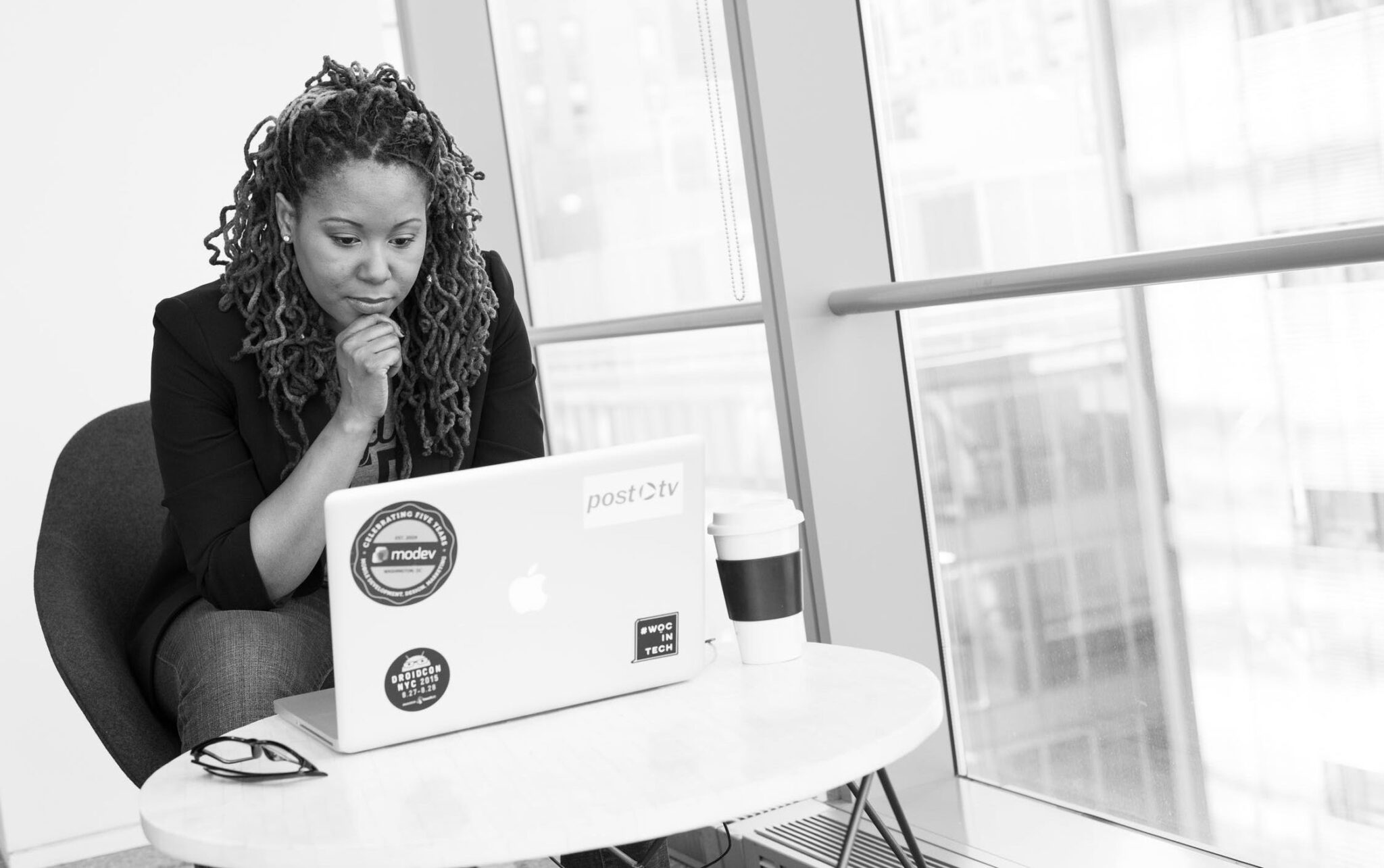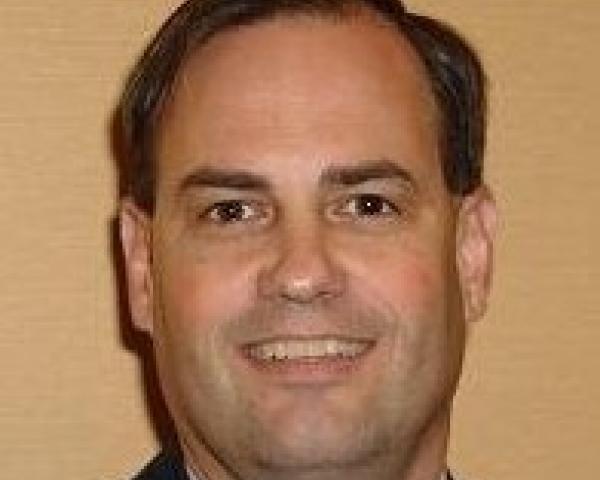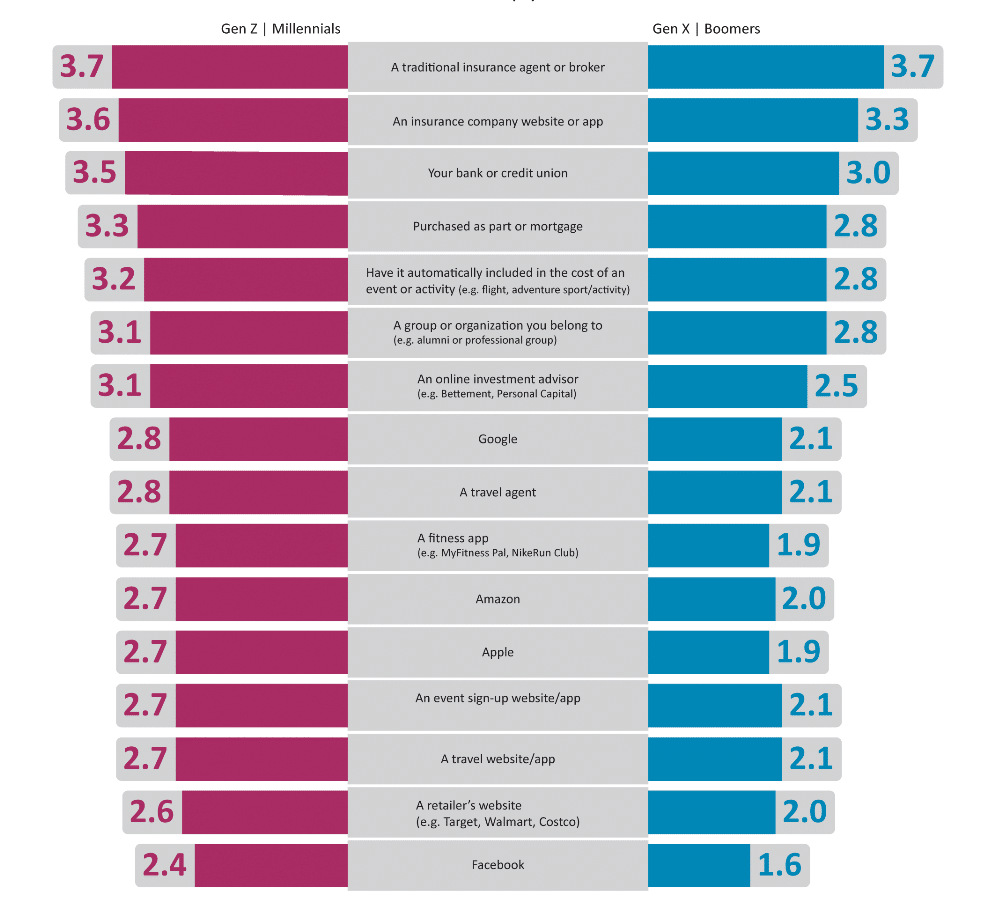The COVID-19 pandemic has effected fundamental changes on society, business and our very existence. It perhaps cannot yet be characterized as the equivalent of the plague, cholera, smallpox or even some historically significant influenza strains. As of May 2020, COVID-19 is not yet even the most significant viral threat of our lifetime, that being human immunodeficiency virus (HIV), which currently infects about 40 million worldwide and killed an estimated 770,000 in 2018. However, COVID-19 impacts are widespread, broad, personal, economic and societal.
Government responses have included testing, treatment, recommendations for social interaction, forced isolation through stay-at-home orders and diminished commerce through business closure orders. Some states have further reacted to the threat with executive and legislative alteration of workers’ compensation, specifically regarding presumptions of compensability. These presumptions are widely discriminatory, treating various workers differently than others.
This paper begins with a brief history of American workers’ compensation, and the path from agrarian families through industrialization to the modern information age. The existence and function of vocations has evolved, and that continues today with new employment challenges from artificial intelligence, robotics, generational distinctions and a self-employed “gig” economy. COVID-19 brings attention to workers’ compensation from the perspective of its relationship with work generally, the public health more broadly and the overall employee/employer relationship. It has highlighted and seemingly accelerated the progressive application of the “presumption of compensability” as legislators, politicians and regulators look for ways to assist those affected by the virus. We examine and consider the long-term implications of its expanded use in workers compensation.
Brief Historical Perspective
Workers' compensation in America today is no more like what it was at birth (1911) than any of us are as individuals. We, and it, began in embryonic form, learned and adapted, grew and matured and became what we are through evolutionary growth and development processes. To understand where workers’ compensation stands today, a brief review of its origin and course is helpful.
The American colonies began as agrarian societies. Initially, dependence for manufactured goods was near absolute, but local manufacturing businesses soon developed. However, well into the mid-19th century, the majority of Americans still earned their living on family farms. As the economy evolved toward the 20th century, the onset of the industrial revolution changed that complexion, with increasing populations migrating to towns and with the growth of industry, manufacturing and employment outside the family home and beyond the farm. This was a paradigm shift of two significant points. First, the labor was less socialized. A family on a farm would strive communally to support an injured family member, while other work environments would lack that familial loyalty. Second, work with machines presented a significant increase in potential for trauma and injury.
It was the industrial revolution, the expansion of manufacturing and the industry ancillary to it, such as transportation, that drove the volume of non-familial injuries (most farms and businesses had previously been family-run). The 1860s brought America’s first attempt at tort reform, (effectively employer protection), which precluded lawsuits by injured employees. The reforms contained no substitute compensation system for the injured.
From German roots, through English adoption, came a movement of American workers’ compensation in the earliest 20th-century. The initial efforts (1902) were deemed unconstitutional, largely because of the prohibitions on “taking” found in the 5th and 14th amendments to the U.S. Constitution. In our current era, when constitutionality has been a critical issue in workers’ compensation legislation and regulation, it is important to remember that early constitutional challenges were successful for employers, underpinned by the strict liability (aka exclusive remedy) element of workers’ compensation.
The foundational element of workers’ compensation was the occurrence of an accident, usually focused upon an “unexpected event happening suddenly.“ It was such a structure, based on “accident, “ that was challenged regarding New York’s 1910 workers’ compensation statute. Its constitutionality was upheld in New York Central R. Co. v. White, 243 U.S. 188 (1917).
White is a critical juncture in the history of American workers’ compensation. It is a critical consideration that all American law must fit within the powers that “we the people” have conveyed to government through our republican form of government and constitutional empowerment. That equation may, of course, be different in other countries that lack this constitutional structure and approach. Similarly, state in the U.S. has its own constitution, which may constrain state law. Thus, workers’ compensation will potentially vary from country to country and from state to state.
From the system’s conception, birth, evolution and development forward, it has evolved from its foundation of sudden accidental injury. Concepts not endemic in its origin, such as psychiatric injury, repetitive trauma and occupational disease, were periodically added to the various state laws that define workers’ compensation. Notably, American workers’ compensation is a conglomeration of at least 55 different jurisdictional systems, rather than a singular comprehensive federal law.
The system’s evolutionary nature and state-driven diversity are critical elements that underpin the emphasis on constitutionality. The early years of the 21st century saw significant volumes of constitutional challenge to American workers’ compensation systems. These were predominantly, if not exclusively, challenges by injured workers contesting the sufficiency of benefits or process in these various state systems, each of which was unique due to its underlying statute.
The decision in White found constitutional sufficiency in the perception of a “grand bargain,” since popularized and quoted as “The Grand Bargain.” The court conceived that there was excuse for the taking of property (no-fault liability) in the concurrent and coexistent loss of tort remedy to the employee. The underlying justification for the impairment of both employer and employee rights is the corresponding enjoyment of various benefits by each.
The foundation of the 21st-century constitutionality challenges has primarily been injured workers asserting that cumulative changes in the “basket“ of benefits undermined the perceived balance of those corresponding advantages and disadvantages. Workers essentially argue that the decrease of, or constraints upon, benefit volume render the bargain less “grand.” Employee advocates see diminution of benefits without perceiving corresponding (“bargain”) enhancements. There is argument on this point. Others point to increased liability for employers in the first century of American workers’ compensation (disease, mental injury, repetitive trauma), similarly without perceived corresponding employer benefit.
There is also some disagreement as to whether systems should be considered in a macro or micro perspective. That is, should constitutionality be a determination of whether a system’s basket of benefits is sufficient generally for employees generally. Or, should the analysis be whether the basket available to a particular employee in specific circumstances is sufficient to justify the Grand Bargain consideration of the employer. This macro/micro discussion occurs both academically and in discrete cases of constitutionality argument.
It is important to remember that workers’ compensation systems are drawn by legislative bodies through a process that is collaborative, adversarial and necessarily compromising. It is therefore generally accepted that workers’ compensation systems are imperfect. There are demonstrable instances in which employers are liable for injuries that are in no way their fault. Similarly, there are demonstrable instances in which injured workers receive no benefits for injuries that are as demonstrably certainly either the employer’s fault or at least inextricably caused by the work. The systems operate on a macro analysis of compromise. As a result, there are individual outlier examples in which the results are perhaps less than ideal. The systems are imperfect, drawn by people who are imperfect, and therefore necessarily imperfect results will ensue.
Occupational disease
The introduction of occupational disease came to workers’ compensation largely through diseases of and peculiar to workplace environments. The best examples are pneumoconiosis and other dust exposure diseases such as silicosis, asbestos and black lung disease. There is an inherent, internal logic to the compensability argument of such exposures. There are likely no occasions for exposure to these diseases in modern American non-work environments. One would be hard-pressed to note the last time they were exposed to such disease-causing dust in their daily, non-occupational lives.
While there is protection from such substances in our modern safety cultures, it is not necessarily true historically. In recent decades, school children were exposed to asbestos that had been used in school buildings and included in clothing as fire retardant. There was a time when children were exposed to Rockwool insulation in the streets and childhood playgrounds. Inhabitants of coal-mining towns were undoubtedly exposed to coal dust from clothing and vehicles in their everyday lives. Thus, the general public was certainly exposed to dusts even when on-the-job exposure was deemed compensable as occupational diseases.
Despite the potential for other exposure, the link between pneumoconiosis and employment was deemed significant and persuasive. Workers’ compensation systems evolved to include a compensability of such occupational diseases that were not “ordinary diseases of life,“ or “to which the public was not ordinarily exposed.” Those who would lament the addition of such occupational disease to workers’ compensation systems and who view it as an inequitable additional liability should remember that the employers enjoyed a corresponding immunity from civil liability based on the ostensible unavoidable presence of these substances in their workplaces.
Similarly, the concept of repetitive minor trauma has become integrated in workers’ compensation, by legislative intent or judicial interpretation. These trauma situations were seen as akin to occupational disease, an “exposure” to trauma in the same sense as an exposure to dust or other disease-causing agent. Some states have created such liability through court interpretations by stretching the word “accident” into more than a discrete event happening unexpectedly. Some states responded through statutory inclusion of repetitive minor trauma while others proceeded merely under judicial interpretations of inclusion, and a few continue to this day to decline benefits for such “trivial trauma” injuries.
As to the addition of these and other liabilities to the states’ workers’ compensation systems, the authors take no position regarding whether the quid equal the quo in this regard. However, for the sake of discussion, the existence of different perspectives on this and other expansions of the application of workers’ compensation is positive in the consideration of workers’ compensation generally in the 21st century.
Challenges of proof
In all workers’ compensation cases, allegations of accident, injury, causation and benefit entitlement are subject to a party proving them. This burden is now often on the injured worker. A persistent problem with disease is epidemiology. Americans are persistently faced with a plethora of maladies for which causation remains an elusive pursuit. We are beset with cancers, heart disease, diabetes and more. These diseases perennially top the list of American cause of death. Billions of dollars are expended annually researching the causes, treatment and potential cures for these maladies and conditions. Though there is periodic progress and specific successes, in large part science remains unable to identify specific causative factors, despite the cataloging of various identifiable risk factors or predispositions with varying degrees of controllability.
A similar challenge is encountered in regard to mental illness. Unlike a broken bone that can be both physically perceived and diagnostically demonstrated by X-ray and other devices, emotional distress and damage are less objective. The existence, and resulting disability or impairment, is inherently more subjective. Through correlative analysis and application of academic training, some objectivity can be brought to bear. However, causation remains a challenge to prove. Equally troublesome is a general societal perception of bias against those who suffer emotional conditions, addictions and similar maladies. It is practical to consider societal bias against these people and conditions that may influence the compromise or bargain that is the statutory trade-off of workers’ compensation.
Presumptions
Workers’ compensation systems began with an inclination to providing injured workers with a benefit of the doubt. This was essentially a presumption in favor of the injured worker. In the late 20th century, statutory amendments were adopted in various states to remove such judicial interpretations. These were referred to as “leveling the playing field,” and essentially resulted in the injured worker having the burden of proof as regards accident, injury and benefit entitlement. However, in a similar timeframe, legislatures were beginning to adopt presumptions of compensability in favor of certain workers for certain conditions.
The concept of a workers’ compensation presumption of compensability began with “first responders” and focused on a general skepticism as to the compensability of cardiovascular disease and events such as high blood pressure, heart attack and stroke. This skepticism evolved into adoption of presumptions for cancer and post-traumatic stress disorder. (Various such presumptions may not be found in a jurisdiction’s workers’ compensation statute, but in other statutes that impose different compensability, presumption or proof burdens in workers’ compensation proceedings.)
Most Americans are familiar with the concept of a presumption in terms of our criminal law. We have heard on television shows that one is presumed innocent until proven guilty. This example illustrates the purpose and point of a presumption, which is merely that something is true under the law until proven otherwise. Presumptions generally fall within two categories, “conclusive” and “rebuttable.” A conclusive presumption makes the decision and its results impervious to challenge. A conclusive presumption of compensability in workers’ compensation would mean the alleged injury is compensable, despite any proof to the contrary that might be presented. A rebuttable presumption is the opposite, as it is true only until proven otherwise.
See also: Workers’ Comp: Cost of Doing Business
In a general sense, both in tort and more recently workers’ compensation, the person seeking recompense (benefits) is presumed not to be entitled to them. That person, the injured worker, is presumed to not be entitled until she/he proves otherwise. Therefore, that person must come to the court and bear the burden of proving entitlement to what is sought. In general, that is showing that an accident and resultant injury occurred in the course and scope of the employment.
A compensability presumption generally establishes that premise. Thus, the “first responder” presumptions simply establish that benefits are due unless another party (the employer) proves that they are not. Generally, the presumption shifts the “burden of proof,” without significantly changing the underlying law of the jurisdiction regarding compensability generally. As these laws provide favorable treatment to select specified occupations or workers, there is an imposition of disparate treatment by government. Some workers are thus treated better than others, with the implication that thus society values them or their service more than others.
These presumptions have become a trend in American workers’ compensation largely through the efforts of collective bargaining units (unions) representing the interests of firefighters and police officers, who have come to be collectively referred to as “first responders.” There are other occupations that have successfully sought inclusion in the “first responder” group, including correctional officers, paramedics and forest rangers. These definitions and thus the inclusion and resulting exclusion differ from jurisdiction to jurisdiction.
Presumptions in the “first responder” realm have become commonplace as to cardiovascular conditions, cancers and emotional claims. Generally speaking, as noted above, these have changed only the evidentiary process of claims. Thus, any employee could prove the compensability of a heart attack or other cardiovascular event in workers’ compensation, but a “first responder” with a presumption may have such an event or condition presumed compensable without proof. A non-first responder would have to prove her/his case, while the firefighter would prevail unless the employer disproved the causation and compensability.
The impact has been different with presumptions regarding first responders and post-traumatic stress disorder (PTSD), a reasonably new (1980) label for a long-documented psychological condition. This presumption has effected substantive change in jurisdictional workers’ compensation law by rendering mental injury claims compensable in one class of employee (first responders) to the exclusion of other classes. This is thus beyond the scope of previously enacted presumptions of a more procedural character.
However, some states have legislated compensability of mental claims in workers’ compensation without necessity of any physical harm or injury. Those states, and this paradigm, are referred to as “mental/mental.” In other jurisdictions, mental sequalae is compensable only if that follows some physical injury otherwise compensable in workers’ compensation. This is consistent with the rule oft-applied in tort cases called the “impact rule,” “pure emotional damage negligently inflicted without physical injury was not compensable.” These jurisdictions and this paradigm in workers’ compensation are referred to as “physical/mental.”
As an example, Florida is a physical/mental jurisdiction; mental claims are compensable only if related to and associated with a physical injury. However, the 2018 creation of a PTSD presumption in Florida expanded the scope of Florida workers’ compensation, rendering mental/mental claims compensable for those who qualify as “first responders” under the Florida presumption law.
Various jurisdictions have established these presumptions for select occupations and conditions. The table was thus set across the country for a variety of reactions to the presentation of an unexpected and somewhat unprecedented contagion, COVID-19, being presumed compensable.
Virus Claims
In February 2020, we began to hear about COVID-19. Within weeks, whole populations were in quarantine, subject to stay-at-home orders and even community lockdowns. The potential of a contagion was not a complete surprise. Hollywood has repeatedly focused upon this potential. However, COVID-19 has largely startled the world. That is, from its novelty (it is often referred to as the “novel coronavirus”), its spread (apparently often transmitted by asymptomatic carriers), its scope (worldwide) and its speed (from first diagnosis to World Health Organization designation as a pandemic in less than four months) make it unlike prior viruses, even those of pandemic magnitude
This contagion has produced once-in-a-lifetime job loss. There is already evidence of permanent changes in the way we dine, work, travel and relax. And through legislative action there will be potentially long-lasting changes to workers’ compensation systems. State executive action has been more prolific thus far, and of broader scope; the duration of those changes, however, is likely less significant as they seemingly remain dependent on the temporary emergency powers of the various governors.
The selected tool for response to COVID-19 has generally been a presumption of compensability in workers’ compensation. This has ranged from the now traditional treatment of “first responders” to the entire non-work-at-home workforce. Some jurisdictions whose executive actions have been targeted between these two inclusion levels have more broadly defined a group as “essential”; others have instead specifically included other employee groups in the presumption.
Those states effecting change through legislative action are more likely making prospective change, though some have specifically included retroactive effect dating to the early diagnoses in March 2020. These actions are statutory amendments, which will remain unless repealed by future legislative action, but which may be rendered moot by medical developments. The states acting through executive action are similarly changing their workers’ compensation laws, but under the auspices of emergency powers of that branch delegated to enhance responsive speed in such events. The executive declarations are therefore temporary, yet could certainly be rendered more permanent through efforts of those states’ legislative branch.
Regardless of whether executive or legislative action was taken, those who pay workers’ compensation benefits will likely be driven to adjust in the face of this unexpected expense. Insurance companies will seek increases in rates; employers that self-insure will either adjust prices or elect methods to otherwise absorb costs. The impacts will be potentially significant, depending on: market, the overall recovery of the economy, the volume of individuals that qualify for COVID-19 workers’ compensation coverage, and the benefits awarded in those reacting states. That these various uncertainties remain may render the adjustment efforts regarding cost-absorption challenging.
Not all states have reacted with COVID-19 presumptions. Florida, for example, reacted with an executive decision directing acceptance of some COVID-19 claims by the state itself. Arizona issued a May 15, 2020, Substantive Policy Statement that directed payer scrutiny of denial decisions. This was not a directive of payment, but a veiled reminder of the potential for other remedies such as “bad faith,” if claims were denied without investigation and decisions taken “not well grounded in fact.” In early June, New York posted an undated memorandum that likewise was not a presumption but suggested some proclivity for the acceptance of COVID-19 claims.
Micro-economic impacts
In economics, the study of financial impact and cause-and-effect analyses are often divided into “micro” (small sample) and “macro” (economy-wide or perhaps industry-wide) categories. The impact of COVID-19 is appropriately examined in these two perspectives: the economic impact on a worker or employer, and more broadly on workers’ compensation systems. Analysis of impact on the nation collectively is perhaps impractical because of the federalist process and resulting diffuse and diverse state subsystems that collectively make up American workers’ compensation.
The immediate financial effects are obvious. Essentially, those who have taken on risk in exchange for payment (insurance carriers) will have their exposure increased without corresponding premium collected or invested. Insurance companies essentially have those two methods for making money: premiums and investment. There is value in markets being predictable and transparent. The predictability of losses allows actuaries to forecast losses, affording a carrier opportunity to charge an appropriate premium, invest it to produce earnings and secure coverage for those who suffer an injury.
Executive action regarding occupational disease like COVID-19 increases risk. Those actions are applicable retroactively, requiring coverage this year without any premium collected therefore this year. Statutory changes that similarly operate retroactively also produce that risk. There are valid questions as to the extent of that risk, and some expense associated with COVID-19 is not covered even in the most liberal extension of compensability (i.e., California). These financial risks can be divided for discussion into three categories: “immediate,” “intermediate” and “long-term.”
The immediate costs are associated with the quarantine requirement that follows the incubation period of this novel virus. When one learns that a co-worker or close family member is infected, the Centers for Disease Control and Prevention (CDC) recommends a self-isolation or quarantine of 14 days. This will produce either a depletion of paid sick leave or an immediate cessation of income. While it is possible that an employer might graciously provide paid leave in such a setting, to avoid infection of other workers by encouraging the self-quarantine, not all employers are likely to do so outside of the new federal mandate. None of the executive actions thus far have required such employer response. Furthermore, each suspected exposure will likely necessitate testing and, perhaps, a physician visit. Successive exposures might lead to repeated need for both medical attention and quarantine, though the federal mandate does not require provision of paid leave beyond 10 days (at five of seven days in a traditional workweek, effectively one, two-week quarantine).
Even in California, the presumption of work-relatedness requires a positive diagnosis. Thus, if the employee quarantines for 14 days as instructed, and learns that the test results are negative, the employee is not entitled to workers’ compensation. Further, the testing involved, and any medications prescribed during that period, would likewise not be an employer’s workers’ compensation burden, though an employee might find those were paid by workers’ compensation as part of the obligatory investigation. And, the financial burden may nonetheless fall to the employer in a variety of situations under the recent risk-socialization amendments to the Family Medical Leave Act (“FMLA”). The same outcome of this federal mandate would thus likely result in employer cost in all states.
The “intermediate” costs would begin with a positive diagnosis in those presumption states. These are foreseen as potentially nominal. A fair number of patients with such a diagnosis will self-isolate and recover in a home setting. One would hope that such isolation and recovery might be limited to 14 days. However, there are anecdotal news reports of individuals suffering serial positive tests and recovery periods of eight weeks. There will potentially be resulting indemnity benefits and nominal medical treatments or medication. There is significant anecdotal evidence that a significant volume of the infection cases falls into this home-recovery paradigm.
The “long-term” costs would begin when hospitalization is deemed appropriate. Such care is expensive, with daily costs often exceeding $10,000. Treatment in an intensive care unit, or including surgeries, respirators and more would be significantly more expensive. Reports estimate that average COVID-19 hospitalizations are eight days, suggesting a reasonable probability of close to $100,000 exposure per case for those incurring “long-term” costs. There is anecdotal evidence of far more significant costs. A 62-day hospital stay in a non-work-associated situation yielded recent headlines of a $1.1 million hospital bill for a 70-year-old survivor of COVID-19. The disease has been present and studied for less than a year. Whether there are recurrent costs or significant risks of future complications and expense for patients remains unknown.
Furthermore, “long-term” costs may also include the permanent death benefits and funeral expenses for the small percentage of patients who succumb to the disease and its sequalae or complications. Those complications may lead to litigation where an employer might contest that COVID-19 caused death, as opposed to a patient’s various potential pre-existing or co-morbid conditions such as heart disease, diabetes, asthma or otherwise, that could have been the real cause of death.
See also: Optimizing Care with AI in Workers Comp Claims
The foregoing is complicated by the potential that testing presents the potential of false results, positive and negative. A false test could affect the employee and employer as to the “immediate” costs, such as quarantine absence. As the compensability of COVID-19 depends on a positive diagnosis, a mistaken test could lead to over- or under-inclusive characterization of those and other expenses. Furthermore, a false negative test might mistakenly re-introduce an infected worker to the employer’s premises just as a false positive might artificially and unnecessarily extend the period of disability in the “intermediate costs” period. The lack of certainty or perceived dependability may increase costs, dictate additional testing, increase uncertainty and anxiety and degrade public confidence and cooperation. All these factors and more complicate the estimation of cost impacts from these scenarios. Regardless, even the lower-range estimates are significant.
Macro-economic impacts
There have been significant financial impacts predicted worldwide, with figures discussed in the billions and trillions of dollars. Early in the pandemic, some estimated that presumptions or other efforts to bring COVID-19 infection within workers’ compensation might increase costs to more than $50 billion. Actuaries quickly revised those estimates to $10 billion. In California, the Worker’s Compensation Insurance Rating Bureau estimates a range of cost impacts for the deployment of the presumption on COVID-19 from $2.2 billion up to $33.6 billion, with a mid-range estimate of $11.2 billion, which is 61% of annual workers’ compensation costs in that state alone. The Florida Division of Workers’ Compensation reported in June 2020 that approximately $3.5 million has been paid there for COVID-19 claims (notably a state without a COVID-19 presumption). Predicting the ultimate costs may be an elusive endeavor.
These estimates and expenditures are perhaps not shocking in the context of news stories about trillion-dollar expenditures. However, the impact on workers’ compensation systems and premium should be viewed relative to system impact. Those costs will be borne across employment in those jurisdictions adopting such presumption. This shifting of viral disease into workers’ compensation represents a potential significant cost and may lead to significant implications for workers’ compensation systems as a material departure from their previously intended construction and application. Critical to the sound management of risk is the balance of loss payment with premium collection and investment. Potentially, a carrier or carriers might sustain a cost increase short-term, without serious effect. However, it is unlikely that such capacity is limitless as regards the nature of risk added or the duration or risk thus undertaken.
The immediate implication may be litigation. Illinois was among the first to adopt a COVID-19 presumption to broaden the scope of workers’ compensation. The Illinois Commission acted on April 13, 2020, near the outset of national reaction to COVID-19. The intent was to “hold employers responsible for COVID-19 diagnoses.“ There were legal challenges almost immediately, and in less than a month a judge had entered a preliminary ruling and the commission had withdrawn its rule. That preliminary ruling was a restraining order in a lawsuit brought by the Illinois Manufacturers’ Association and the Illinois Retail Merchants Association that had the support of more than two dozen business groups. It is groups like these that represent the employers that would see economic impact to their businesses from an increase in workers’ compensation premiums to finance such benefits outside the more historically normative and anticipated application of the statutes.
Workers’ compensation premiums are like any other cost of doing business. In setting a price for goods or services, businesses take into consideration the underlying costs such as raw materials, overhead (rent, utilities, taxes, fuel etc.) and labor. Part of that labor cost is the expense from workers’ compensation premiums. As premiums increase, businesses face economic choices, which may or may not be in the best interest of society but, at least in a public company setting, are in the best interest of its owners.
Interstate competition
Faced with an increase in labor cost, business will either absorb that cost or increase the price of its products or services. To some degree, that decision will be internally driven, but it may also be influenced by competitive forces in the business’ market. If the good or service is confined to a geographic area, such as a hotel, the decision is more likely to be influenced by outside factors such as the price that competitors charge locally. If a hotel in Illinois sees increased workers’ compensation premium cost as a result of COVID-19, then it is likely that hotels around it will set the same or similar increases, and all such businesses will increase prices accordingly. Thus, an impact focused primarily on consumers.
If the business is one that faces cross-border competition, such as a hotel in Calumet City, Illinois, that is mere blocks from competing hotels in Indiana, then the reaction to a premium increase may instead be to absorb all or part of such increase to retain a competitive marketplace price. As the Indiana competition need not increase its price for such presumption, the Calumet City business may thus be unable or unwilling to do so. This may be a similar inclination in any business that is non-localized (mobile tradespeople, Internet-based sales, state border locations, etc.). History supports that businesses with a non-localized focus may even relocate facilities based on perceptions of state or local governance possibly affecting the economic health or profitability of the company. The business is inclined, even obligated, to minimize expense and maximize profit where possible.
This inclination to minimize cost has been historically viewed in terms of workers’ compensation premium costs as a jurisdictional “race to the bottom.” Some perceive that states vie for business enterprises by constricting the benefit levels in workers’ compensation and by otherwise “discouraging injured workers from applying for benefits." The perception has been expressed that limited workers’ compensation entitlement leads to minimized insurance premiums, and thus a competitive cost advantage for business in that jurisdiction. The theory holds that businesses will strive when practical to locate in jurisdictions with perceived favorable workers’ compensation systems. That is, of course, not always possible, as with a hotel in Columbus, Ohio (which is a long distance from any state border and thus any competing jurisdictional price advantage). The theory may be evidenced by some but not all states where the other various factors that influence where companies locate and conduct their business are accounted for.
The perception that business may make cost-based location decisions is reinforced by recent construction of multiple massive automobile manufacturing facilities far from the Motor City. In 2018, Axios noted that “auto manufacturing in Southern states has flourished,” while the effect has been the opposite in previous manufacturing strongholds. The attributed reason is the lower cost of labor in the South, a product primarily of the unionized workforce in Michigan. Workers’ compensation costs are a factor in overall labor costs and can add significantly to expense. Premium cost can contribute to comparative advantage and competition for employment opportunities.
The Chicago Tribune compared Illinois with Indiana. The analysis specifically attributed company departures to taxes, regulation, and “the Illinois workers’ compensation program.” Thus, as states strive to shift the societal cost of COVID-19 onto employers in their states, those costs will either decrease profitability (if the business’ competitive posture will not allow price increase), which may spur departures, or those costs will be passed on to consumers in price increases where possible. Even if the premiums increase significantly, that will not necessarily mean a commensurate or similar level of product price increase. However, increasing the cost of workers’ compensation insurance may have a significant impact on the price of any business’ products or services.
In non-localized endeavors, the cost of (or even existence of) workers’ compensation and similar regulatory programs may render competition with offshore enterprises increasingly difficult. While there is a significant focus in the U.S. on employee safety and welfare, that sentiment may not be shared in off-shore jurisdictions. There, the cost of labor may therefore be less than can be achieved here. The shifting of COVID-19 costs to business could exacerbate that effect.
In each instance, the impact on the worker is important. Whether through collective bargaining or not, the employee seeks to earn a competitive wage in the overall economic exchange. The workers’ compensation system offers workers a critical benefit, a safety net. However, many employees will work an entire career without need for workers’ compensation; they will evade accidental injury and occupational disease.
Similarly, a great many workers will toil year after year without significant need for the benefits of health insurance or short-term disability either (each is also a cost of labor for the employer, or a benefit purchased by the employee). Employees, for the protection of self and family, are interested in the existence of such coverages but are perhaps less interested in costs, unless they themselves purchase the coverages. At the same time, how or if presumption, its use, expansion and application affects businesses, their decisions and bottom line are similarly beyond the interest of most workers. It is, by default, of greater interest to companies and their interests in both efficiency and a quality to maintain a well-functioning system for work-related injury and disease. As the entity bearing the cost, a business focuses more on the implications of shifting COVID-19 into the workers’ compensation Grand Bargain.
The employee is benefited by the maximization of remuneration, in a relationship that must remain symbiotic. Employers cannot produce and profit without employees, though robotics and artificial intelligence imply some 21st century shifts in that relationship. Though the employee seeks to maximize return, an agreement for a wage rate is not worthwhile if the employer becomes bankrupt. The employee should want the employer to succeed and prosper, and the employer should have similar wishes for the labor engaged. In recognition of this symbiosis, the employer should likewise facilitate success for the employee. Those aspirations are unfortunately not uniformly seen in practice, but in ideal.
Conclusion
The stage is set for workers’ compensation in some jurisdictions to face costs associated with COVID-19. Whether those costs are immediate through retroactive executive liability expansion or in the future through legislative expansion with commensurate rate changes, workers’ compensation insurance carriers will eventually be forced to increase premiums to cover this risk where deemed compensable. As states expand both their workers’ compensation coverage and premiums, there will be potential incentive for business to minimize presence in those jurisdictions, as practical, and thereby enhance profit. The implications for both intrastate and international competition are potentially significant.
There may be those who characterize this expansion, contrary to recent system criticisms, as a “race to the top.” Critics may allege that merely describes the workers’ compensation cost of doing business. As COVID-19 plays itself out over time, the extent and frequency of using the presumption will influence how it and similar presumptions are used for distribution of risk in the future, not yet on the radar. Stakeholders in the workers' compensation systems would be wise to carefully consider the full ramifications of the continued expansion of the presumption tool before capitulating to its use without a clear, supportable basis for doing so. The Grand Bargain was designed to offer balance in industrial injury rights between employers and employees. Overuse, and under-debate, of the presumption risks is tipping the balance away from the original intent and increasingly toward inequity between these stakeholders.


